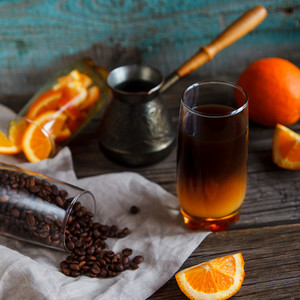The rise of healthy eating has been hitting new heights in 2018 with trend-setting ways to cook and eat vegetables, serving and preparation methods made with Instagram in mind, and flavors not yet ubiquitous on mainstream American store shelves, all while keeping nutrition, weight maintenance, and a healthy lifestyle in mind. In this daring new world, health and indulgence no longer contradict each other. It is now fashionable to talk about nutrition, the newest dishes, ingredients and preparation methods. Formerly seen as a tasteless burden, healthy eating is now regarded as a delicious pleasure that is stylish and cool and, especially, one that tastes amazing and looks beautiful. Let's take a look at how some Symrise Top Trends are bubbling up from our global TrendScope trend Healthy Lifestyle in 2018.
Vegetables are being prepared in more interesting ways than ever and in doing so, have replaced meat at the center of the plate while also adding important vitamins and minerals to various meals. Chefs are giving veggies the main-course treatment with smoke, curing, dry-aging, and even transforming them into satisfying jerky, like beef jerky, and hearty, meat-like sauces, and more. Brining, especially, is the new pickling. Similar to how one would brine fried chicken, chefs are now doing the same for veggies. Chef Michael Fojtasek says he regularly brines and smokes vegetables for his restaurant Olamaie in Austin, TX.
Seeing carrot tartare on a menu should no longer seem like a typo. Just like meat, vegetables are now getting the “French Technique” with confit, like with Chef Cindhura Reddy who creates whole carrot and animal fat confit at Spuntino in Denver, CO. And as plant-based protein continues to rise in popularity, veggies are getting treated like jerky, too, taking on a similar form to beef jerky but completely vegetarian. Chef Bill Kim of Urbanbelly in Chicago cures and tea smokes veggies for his restaurant, offering his customers a fine dining experience full of essential vitamins and minerals. Turning veggies into meat-like sauces is on the rise, as well. Chef Franklin Becker of FB Hospitality in NYC loves to implore the technique of reducing cooking liquids into vegetal sauces.
Discover the Top 10 Flavor Trends of 2018 HERE
Everyone wants to know what’s the next “it” vegetable. What will rise as fast and stay as long in ubiquity as the various types of kale present today? There are a few contenders coming for kale’s top trendy veggie food crown. Chef Andrew Whitcomb of Petit Crenn in San Francisco thinks collards are the next kale, thanks to a boost by the Southern Revival movement taking place in America. But kohlrabi is just as likely a contender to be the next kale as we’ve seen it sprouting up on menus across the U.S. – from kohlrabi fries in Miami to Pastry Chef Jen Yee’s kohlrabi ice cream in Atlanta.
Mushrooms may not be very similar to the various types of kale available, but different varieties are becoming more ubiquitous and used in new ways on menus and in crafted food products, as witnessed at this year’s Winter Fancy Food Show. Chef Ilma Lopez of Piccolo and Chaval in Portland, ME likes to use Chaga mushrooms. Back to leafy green competitors, chard leaves are a legitimate contender to be the next “power green.” Chefs Crystal Hovland of L&K in Needham, MA and Chef and cookbook author Ana Sortun of Oleana, Sofra and Sarma in Cambridge, MA regularly use chard leaves in their restaurants.
CLICK HERE to subscribe to the weekly in-sight newsletter
Adding new flavors unheard of or not-well-known by Americans is one way the health trend keeps growing; there’s always more flavors and ingredients to discover and add to menus for consumers actively looking to expand their palates while keeping nutrition in mind. Functional health is especially on the rise to help improve physical and mental well-being with “super” foods beyond quinoa, chia and turmeric, like moringa, which has been popping up in many functional beverages. El-Bulli-trained pastry chef Will Goldfarb uses moringa in his dessert laboratory in Bali.
From juice bars to high-end restaurants, bee pollen has been taking off, offering a healthy alternative to added sugar. Chef Britt Castro of Holy Roller in Austin, TX uses bee pollen in many of her desserts to reduce added sugar that is refined. Grains are growing, like farro mixed with chicken liver mousse at J.C. Holdway in Knoxville, TN, and wheatberries with Chef Michael Gallina who regularly uses them in his dishes at Vicia in St. Louis, MO. There’s also Schisandra (the five flavor berry), which stems from Northern China and Far East Russia and boasts many health benefits. Chef Jason Bond of Bondir in Cambridge, MA likes Schisandra berry a lot, with its beautiful color and intriguing flavors.
There’s also the rising importance and pressure on chefs to make foods look appetizing not just for their customers, but for their Instagram accounts and the photo-hungry viewing public. This has helped bolster the revolution of healthy eating thanks to beautiful natural elements, colors, and textures that were once not highly considered when putting together what used to be considered “health food.” Now, emphasis is on look and taste equally, making this trend a way for people to embrace beauty, inside and out.









